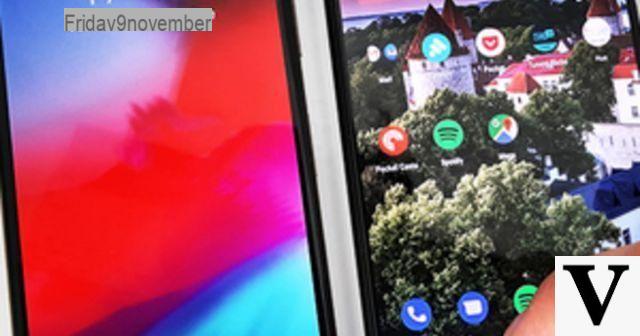
Do you want to get rid of Android's navigation buttons and opt for the very fashionable "gesture" navigation? Follow the leader...
In recent years, smartphone manufacturers have declared war on screen borders. From the Galaxy S9 to the iPhone XS via the Oppo Find X, all are looking to reduce the margins around the screen to allow the screen - and therefore the content - to occupy as much space as possible on the front. While Apple took the opportunity to upset the ergonomics of its iOS devices and switch to navigation based on gestures and finger swipes, the majority of Android manufacturers still rely on software buttons that nibble a bit of space at the bottom of the screen.
For anyone who wants to get rid of those pimples, there is a solution called Fluid Navigation Gestures. An app that allows you to adopt "iOS" gestures - or OnePlus for Android fans - on any mobile.
Installation and permissions
To start, of course, you have to install the application. You can find it on the Play Store by searching for "Fluid NG" or "Fluid Navigation Gestures". You can also go directly to the application form. The page might show "Beta" or "Unpublished", but fear not, the app is working fine and you're not risking anything. The only problem is that it is not translated. But, as you will see, there is nothing really rocket science.
Once the software is installed, skip the tutorial by pressing Done and you arrive on the main screen. Turn the switch of the Enabled line from Off to ON. At this point you will need to give the app permission to "overlap other apps". Flip this switch to On and return to the app. Toggle the switch back to On and this time authorize the app in your accessibility services. Once done, the app has the necessary permissions on the mobile.
Allowing the overlay of apps and access to accessibility services is an essential first step.
The rest of the manipulations are a little more technical. You must first activate the USB debugging mode on your mobile. To do this, go to settings, find the line "Build number" - which is usually under "System - about phone" - and type 7-8 times on it. This reveals the "Developer options" menu in settings. Dive in and activate "USB debugging", after which you will have to arm yourself with a PC for the rest of the manipulation.
A story of ADB
This passage through the Android Debug Bridge (or ADB) on a computer is essential to give the app the right to modify the interface of your mobile. To do this, go to the Android Developers platform and download the SDK-Platform-Tools kit. Unzip the resulting package and go to the newly created folder. Click on the address bar, erase its contents and type "cmd" to launch a command prompt from the folder path.
It is in the address bar (here framed in red) that you must type "cmd" to open a command prompt.
Once done, connect your phone to your computer via USB cable and paste this command:
adb shell pm grant com.fb.fluid android.permission.WRITE_SECURE_SETTINGS
in the command prompt on the PC.
Once done, you can go back to your smartphone and start playing with your app.
Gestures of your own
In the app, toggle the "Hide Navigation Bar" switch to ON. An alert message appears informing you that uninstalling the app will not get rid of the changes made. Remember, if you change your mind, to deactivate the service before uninstalling the app. Press "I Understand" to confirm that you understand the message correctly. Magic, your buttons have disappeared and the app now occupies the entire screen!
By default, swiping your finger from the left or right side of the screen will take you back, while swiping from the bottom border will take you back to your Home screen. The recent apps screen appears if you swipe from the bottom and hold your finger on the screen. But all of this is configurable!
All the Fluid Navigation Gestures configuration options
In the Actions submenu, you can assign two actions to each of the marked areas (one on each side and three on the bottom of the screen). The first will run when you swipe fast, the second when you swipe and hold your finger on the screen. So you will be able to lower the notifications panel with a single gesture, launch an app with another, or even juggle your last two apps with a third. There are many possibilities for customization.
By default, a "drop" accompanies the movement you make on the mobile.
The most enthusiastic (and picky) will even be able to adjust tiny details such as the sensitivity to gestures, the size of the action zones and even the intensity of vibrations and sound during actions. The pro version (sold € 1,79) unlocks a fourth action zone on the lower edge and allows you to adjust the color of the "drops" which accompany the movements.
The efficiency of Fluid Navigation Gestures is its big advantage over other apps that promise the same. Whether on a € 100 or € 900 smartphone, the experience is impeccable. Notice to all those who wish to change their habits a little and improve the ergonomics of their mobile.


























